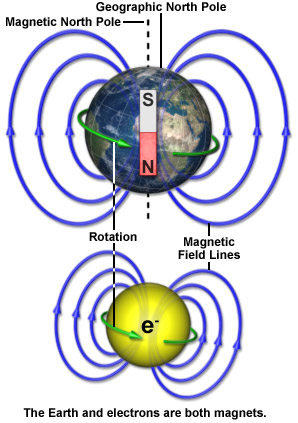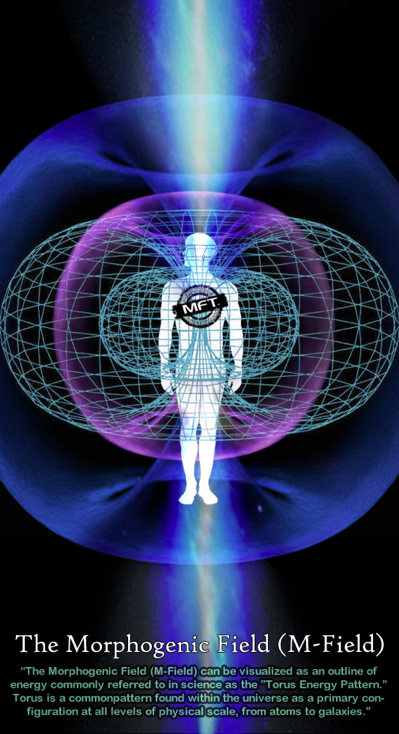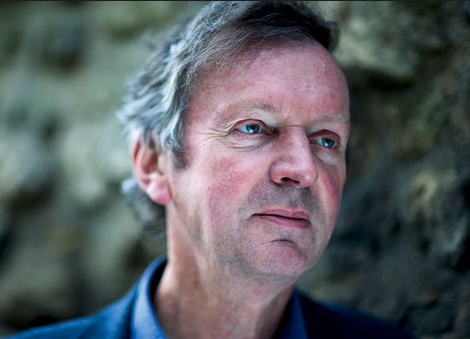Let’s Talk!
Modern science’s worldview is dominated by the Newtonian paradigm. If something cannot be measured using the 5 senses, it is deemed unreal and therefore irrelevant.
Fortunately, there are scientists who are breaking free from these restrictions and dare to put forth unconventional ideas. One of these leading-edge thinkers is a British biologist and author Rupert Sheldrake Ph.D.
In September 2013, Sheldrake presented his ideas about Morphic Resonance at the International Gathering of Eden Energy Medicine in Orlando, Florida. The following are the highlights of his talk.
The word morphic originates from the Greek word morphe meaning form or shape. Morphic fields are shelf-organizing systems that organize a wide variety of things such as molecules, cells, organisms, groups of organisms (i.e., flocks of birds), and the activity of our brains.
The chemist and physicist Michael Faraday was the first to propose the concept of fields. Faraday worked with magnetic and electric fields and demonstrated their presence using iron fillings around magnets. A field is a region of influence that is inside the magnet but also stretches out beyond it.
Energy is one of the unifying principals of science. There is energy in nature that allows things to move, change, and flow. This energy can be converted to other forms of energy such as mechanical work, heat, light, and chemical energy.
Yet, the energy itself doesn’t have any shape or form on its own. It’s a concept that the Hindus call Shakti which is blind undirected energy permeating all things.
Energy is organized by fields. Fields give energy form or structure. Fields are not themselves energy, and energy is not itself a field.
Fields are also modifications of space. For example, Einstein proved that the gravitational field is space-time.
 Living organisms are inherently holistic and so are fields. If you cut a magnet into two parts, you get two smaller magnets, each with a South and North pole. The morphogenetic fields of organisms are also inherently holistic. If you cut a willow tree into small pieces, each piece is able to grow into a whole new tree.
Living organisms are inherently holistic and so are fields. If you cut a magnet into two parts, you get two smaller magnets, each with a South and North pole. The morphogenetic fields of organisms are also inherently holistic. If you cut a willow tree into small pieces, each piece is able to grow into a whole new tree.
Yet, we still don’t know exactly what fields are…
Our memories are not stored in our brains – no one has been able to locate them in the brain. Memories depend on resonance with our own past. The brain is therefore like a television set or receiver.
These memories work through a process called morphic resonance of like upon like across space and time. They are carried and expressed through fields. Every species has a group memory, and every member draws from this group memory and adds to it. According to ancient Rishis, it is Karma or the influence of the past.
In the 1920’s developmental biologists proposed that living organisms are shaped by form-shaping fields called morphogenetic fields. Morphogenesis means ‘the coming of being of form”. We need this concept to explain the way animals and plants grow because the form isn’t all there inside the egg or seed.
Morphogenetic fields are organized in a nested hierarchy. In each level, the whole is more than the sum of the parts. There’s a field for the whole organism, for each organ, for each tissue…etc.
Today, most people naively think that form is explained by genes. Controversial biologist Bruce Lipton explains that genes only code for the sequence of amino acids and proteins in molecules. They do not provide plans for the whole organism. For example, your arms and your legs contain the same proteins and cells, and yet they have different shapes.
What this hypothesis suggests is that inheritance is not just a matter of genes or epigenetic (influence of the environment) modifications of genes. A great deal of it depends on the inheritance through the morphic resonance of form and behaviour. Therefore, most inheritance depends on morphic resonance.
Development is also modular – you either get a wing in a butterfly or you don’t. You can get distorted patterns of development, but basically the pattern of development appears in a kind of modular way. The morphogenetic field is what organizes these modules of development including the whole organism.
 These fields also enable the organism to heal. The self-healing capacity of organisms is inherent in plants and animals. The organism has been healing itself long before the appearance of humans. Humans have been healing themselves long before the invention of health care systems or even energy medicine. Many healing systems work by stimulating our inherent healing capacity.
These fields also enable the organism to heal. The self-healing capacity of organisms is inherent in plants and animals. The organism has been healing itself long before the appearance of humans. Humans have been healing themselves long before the invention of health care systems or even energy medicine. Many healing systems work by stimulating our inherent healing capacity.
The laws of Nature are like habits. Things happen the way they do because they happened the same way in the past. This influence will build up cumulatively, enabling things to get easier to happen as time goes on.
This theory can be tested in crystallography. If you make a new chemical compound for the first time there won’t be a morphogenetic field for that crystal because it never existed before.
But after you make the first crystals and you try to make the same kind of crystal anywhere else in the world, the second time should be a bit easier because of morphic resonance from the first crystals. The third time should be easier still because of morphic resonance from the first and second sets of crystals…and so forth.
Another example is the Intellectual Quotient (IQ) test.
In the 1980s Sheldrake predicted that IQ average test scores would go up. According to him, the increase in test scores would be due not to the fact that people are getting smarter, but that the test is becoming easier since so many people have written it.
Interestingly, researcher James Flynn mapped the scores of IQ tests in the United States from 1918 to 1989 and discovered that test scores had improved by 30%. Scores continue to improve. This is now called the Flynn effect.
Biologist Rupert Sheldrake is one of today’s cutting-edge thinkers in science. His recent Morphic Resonance talk at International Gathering of Eden Energy Medicine explores concepts such as fields, energy, memory, and morphogenesis.
Sheldrake explains that who we are may be more the result of invisible forces such as morphic fields than our genes. Therefore, we are greatly influenced by fields, but also contribute to them. Let’s hope that these new ideas will continue to be explored so that we can gain a better understanding of the mystery of our existence.
Literary Truths
Here are other interesting facts about morphic fields and genes as per Rupert Sheldrake’s talk:
- One can predict at only about 5% accuracy a person’s height and vulnerability to various diseases based on their genetic makeup. On the other hand, one can predict at an 80% accuracy an individual’s height by simply using a measuring tape and extrapolating the value based on their parents’ height.
- In the past 4 years, the Genome Project revealed that the number of human genes is far fewer than expected. There are only 22 000 genes although they expected 100 000 genes.
- One can only predict at a 10% accuracy if one identical twin will develop the same disease as the other twin.
- Morphic fields may connect members of the same family at a distance and explain telepathy. Telepathy is therefore not paranormal but natural.
- Sheldrake did a telephone telepathy study with hundreds of trials. The subjects were able to guess the identity of the caller 45% of the time – way above the 25% chance level.
Truth in Motion
Please note that Rupert Sheldrake’s talk is 1 hour and 11 minutes long.
References
Rupert Sheldrake – Morphic Resonance: https://www.youtube.com/watch?v=MtgLklXZo3U&noredirect=1
Picture 1: https://www.ft.com/content/954ca27e-4871-11e2-a1c0-00144feab49a#axzz2uhBujyoZ
